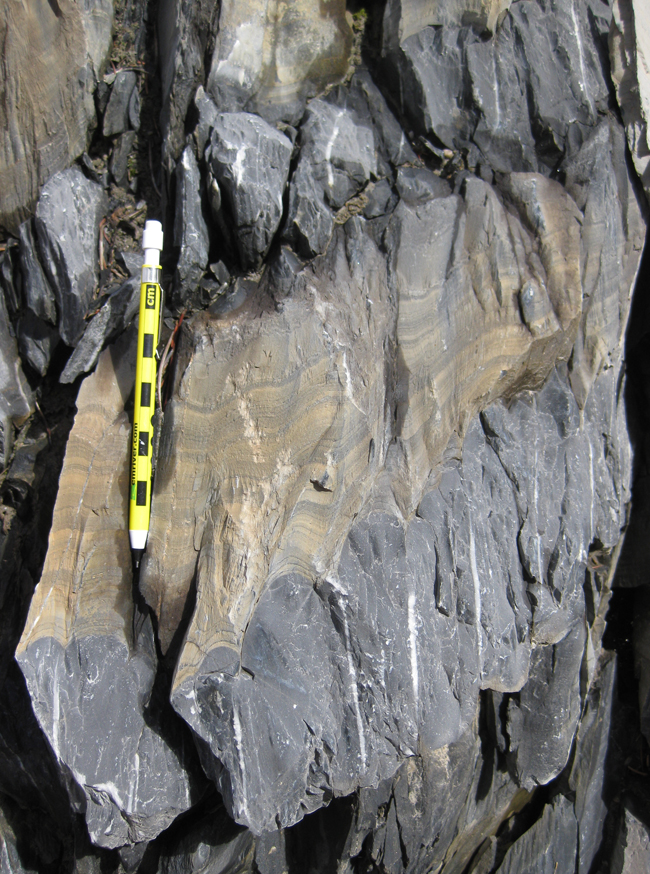Remember our examination of buckle folding versus passive folding in the Chancellor Slate (cleaved limy mudrock) of eastern British Columbia?
Well, here’s another example:

There’s so much awesomeness going on in that image, it’s hard to know where to start. The prominent black thin layers are buckled in a very boxy, asymmetric way. In places, the layer is discontinuous, suggesting faulting or shortening via pressure solution. Note how the cleavage that emerges from the overlying and underlying more massive units warps and deflects (dominantly to the left) as it crosses the trio of high-contrast thin beds.
From a few feet away, here’s another example of more classic cuspate-lobate folding between units of different strength:

And from a few feet away in the other direction, here’s a bunch of offset thin beds, which at first looks a lot like a series of microfaults, but in fact is pretty clearly pressure solution induced dissolution of some of the (now absent) rock along the prominent pressure solution seams (distributed cleavage or stylolites):

Happy Friday to you!

These are marvellous. The regional behaviour of rock in the manner of toothpaste.